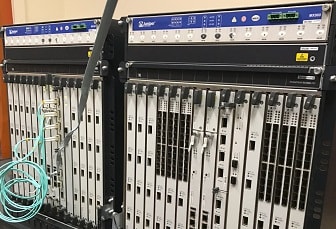Comparing Cisco vs. Juniper Routers
Here is a comparison of Cisco and Juniper routers

Juniper Networks, located in Sunnyvale, California, offers a variety of networking products like routers and switches as well as security and software-defined networking (SDN) solutions to businesses. With an experience-first approach combined with artificial intelligence driven IT solutions it stands alone; maximizing operational efficiency while also improving innovation capabilities. Juniper Networks helps customers interconnect their data centers across open programmable cloud environments using proven standards based network fabrics that provide essential reliability and security for any business enterprise.
Juniper Networks offers comprehensive, multicloud solutions to deliver tailored customer experiences and streamlined network operations. With intelligent automation technology, Juniper is helping companies expedite their digital transformation journeys. Moreover, its focus lies in enhancing end-user satisfaction via simplified multi-domain network management capabilities.
Cisco, headquartered in San Jose, California, offers an expansive range of products and services that include networking, data center, the Internet of Things (IoT), security & collaboration solutions tailored to suit organizations across multiple market segments. With its extensive technology portfolio delivering mass-scale 5G cloud-native architecture solutions; businesses are able to streamline their operations life cycle with Cisco’s assistance.
Cisco has a wide selection of hardware and software products as well as solutions to fulfill diverse market needs. Additionally, their cloud integration services make it simpler to join with AWS, Google cloud or even your own private cloud systems. Also, you can trust Cisco’s security features for reliable cyber protection.
Cisco routers are known for their reliability, scalability, and performance. They offer a wide range of features, including:
- Advanced routing protocols
- Comprehensive security features
- High availability features
- Cloud-based management tools
Cisco routers are a good choice for businesses of all sizes, from small offices to large enterprises. They are also a popular choice for service providers, who use them to build their core networks.
Juniper routers are known for their high performance and scalability. They offer a number of advanced features, including:
- Junos operating system
- Innovative routing protocols
- Advanced security features
- Open standards support
Juniper routers are a good choice for enterprises and service providers that need high-performance networking solutions. They are also a good choice for businesses that are looking for open standards-based solutions.